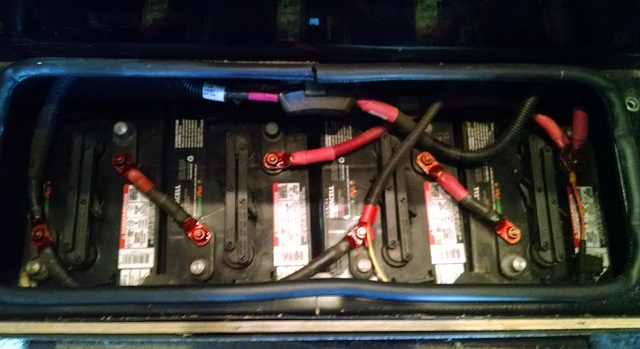
-Monthly 15-20 minute task-
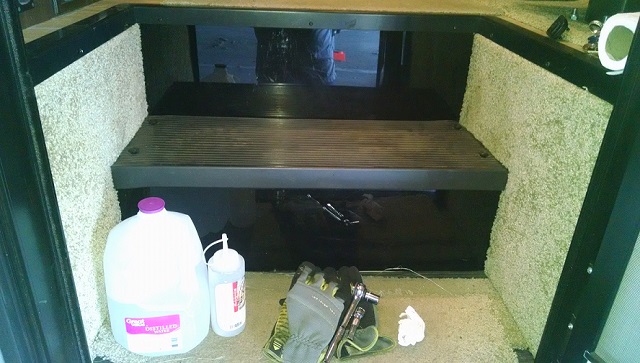
Once a Month, I check all 4 house batteries. Each battery is a 6 volt lead acid deep cycle golf car battery, that came with this class A model (2016 Tiffin 36UA, purchased new). After almost 4 years, these batteries are still testing and working great. Regular maintenance, likely, has a a lot to do with that. On my previous coach (2004 Fleetwood Bounder diesel pusher) I replaced the 4 batteries after purchasing used in 2010. With monthly battery check and maintenance, the batteries function well for 6 years, and I had no issues, except for corrosion as the batteries aged. It seems that as lead acid batteries age past 5 years, they start gassing more. Also, over charging can cause batteries to boil and gas more. So far, with the batteries in the coach that I have now, the monthly maintenance takes only about 15 minutes, and I’ll weigh out if that time is worth spending almost twice as much money on no maintenance AGM batteries in the future. The monthly battery maintenance should have these batteries lasting another 3 or 4 years. One thing to check for during the maintenance, is any swelling of a battery. I have never experienced that issue in my 20+ years of owning rvs. I have seen swollen batteries in battery shops, though, as some were swollen like basketballs, and looked ready to explode. Another thing to consider when working around batteries, is to remove any jewelry, knives or anything that could be an issue if an arc occurs. Some form of safety glasses and gloves are a good idea, when working around batteries. I keep a gallon jug of distilled water on board and use an inexpensive plastic condiment bottle to dispense any distilled water that is needed in a battery cell. I make sure that the coach is unplugged, or generator turned off (if the genset was the power source). I turn off the 12 volt power switch (also known as the salesman switch). I wait a few minutes for the batteries to calm down. After removing the battery caps, one set (3) at a time, I’ll add distilled water where needed in each cell, careful to only fill to bottom of the slotted tube (well covering the plate that can be seen below the water line).
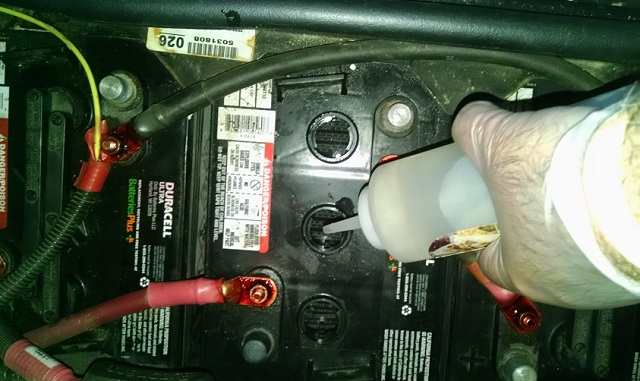
Once the batteries are topped off to the proper fluid levels, and battery caps all replaced and tightened, I carefully use a the proper socket to check the tightness on the connections. I do not over-tighten.
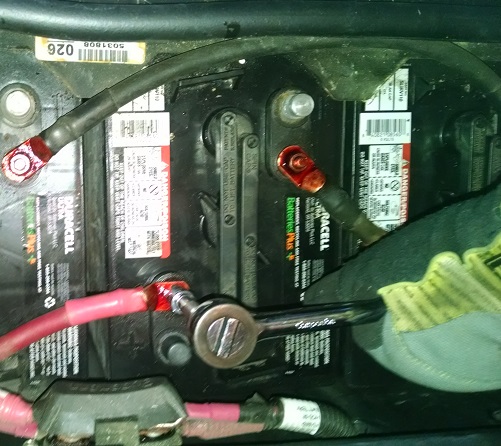
I am cautious when checking the tightness of the battery connections, to make sure that I don’t touch any metal while tightening the cable connections. I, carefully, wipe down around the batteries.
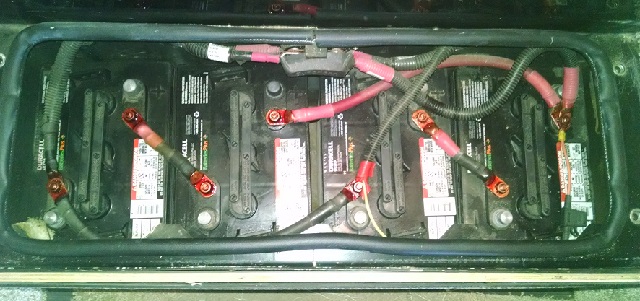
Following those steps, I replace the step cover over the batteries, and sometimes I crawl under the coach and look up at the bottom of the battery holder and check for any corrosion. I turn on the 12 volt switch, and check my voltage reading on the wall dispay. At that point, I usually see 12.8 to 12.6 volts. That is with the house battery bank powering the residential fridge, any lights being used, water pump, some wall outlets, tvs etc. I plug the coach power cord into the power supply, or use the generator if dry camping, and check the voltage on the wall readout, and it is either holding at 13.4 to 13.6 volts or rises to a little above 14 volts if it’s doing a full charging routine. I put everything away and I’m done, until next month. During the summer months, it seems to be very important to check the 4 house batteries once a month. I do check the 12 volt chassis battery that came stock with this Ford V10 engine and 26k chassis, but only do that every other month, as it doesn’t need the TLC that the deep cycle house batteries do.
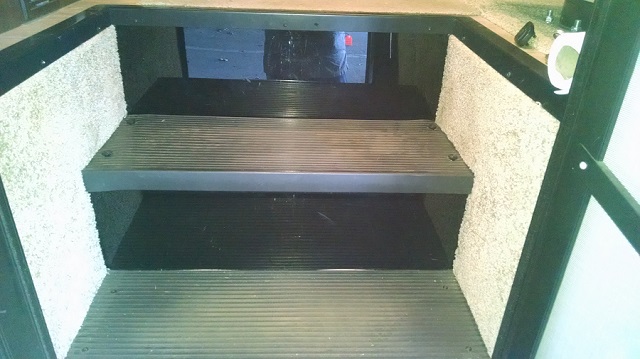
______________________________________________________________

We welcome you to check out some of the places that we enjoy exploring around the ArkLaTex region and… beyond the outer parameter. Visit our Journal page HERE
__________________
You’re Trippin’ With Tom & Teri. Our location is a space in time. No matter where you go, there you are, and at the moment, We Are HERE.
__________________
Tom shares some of our motorhome preparation, maintenance & projects…along with expecting the unexpected. Visit our Projects page HERE
__________________
Also, visit us at TomsMaHauL on Facebook HERE
__________________
We’re checking our email inbox, and checkin’ it twice. We’ll check it again, to see if you checked in. Email: info@TomsMaHauL.com
